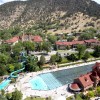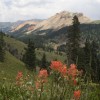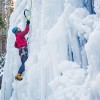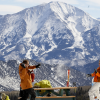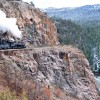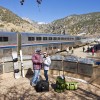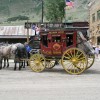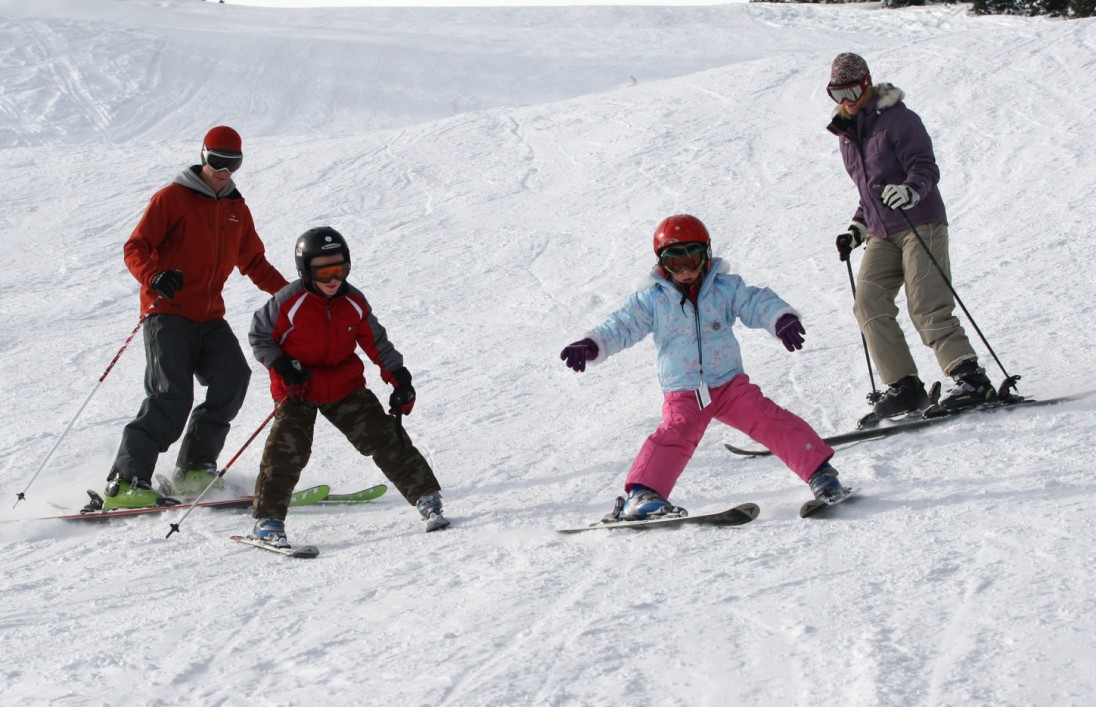
1. Take a break between your first and second day of skiing.
We often want to squeeze in as much time as possible, or get that great discount by buying a 3 or 4 day lift ticket; but your body will thank you if you leave a day to rest after your first or second day of skiing. Often, resorts will let you use a 3-day lift ticket spread out over 4 days as long as you use it for the first day that you reserved it for. You will be sore and tired after your first day, and if you’re bringing kids they will also need a break. Enjoy the hot tub, or the town you are staying in. Get a lot of rest and drink a lot of water so that you are ready to enjoy the next day of your trip.
2. Seriously, apply sunscreen and lip balm with SPF, every day, multiple times a day, regardless of weather.
Above 9,600 feet, the sun is 40% stronger. Even though it is cold and there may be clouds, you still need to wear UV protective sunscreen and lip balm with a high SPF. Keep in mind, UV rays can travel through clouds and bounce off snow. It’s much dorkier to have a goggle tan than to be putting on sunscreen.
3. Make sure you have all your ski gear
Say it with me, “Skis, boots, poles, helmet, gloves, jacket (and pass).” Say it when you load up the car, say it when you head to the ski resort, say it when you get to the base, say it after lunch. Have your kids repeat it, sing it or rhyme it. There have been so many times we have left a pair of gloves in the car or even poles! Obviously, snow boarders need to adjust this. If you do accidentally leave, or lose, your gear, check the lost and found at the resort for something you might be able borrow before you pay for new ones.
4. Ski Lessons
If you have never skied or boarded before, it is definitely worth paying for that lesson. Check to see if it includes a lift ticket or lunch and plan accordingly. Don’t let a friend teach you. It can be frustrating to learn if you don’t have someone with teaching experience, and they often have special places on the mountain for beginners, which will help with safety and confidence.
5. Talk about the lens
When you are renting gear, you will get a pair of goggles with lens that might not match the weather conditions. You’ll want a darker lens for bright sunny days and a different, lighter shade for cloudy days. Also, make sure you don’t touch your lenses with your bare fingers!
6. Stay hydrated
You may perspire when skiing. But, sweat dries faster when there is less humidity in the air so you might not realize how much water you are losing. You also loose water through breathing at high altitude twice as quickly. Dehydration is risky on its own but it can also mask or worsen altitude sickness. If you are not drinking enough water, you will become tired and might develop a headache and other high-altitude symptoms. Every 3 runs or so, stop and take a water break.
7. Take your cell phone and put in ski patrol’s number
Ski patrol’s number can be found on the mountain’s trail map (#8). It’s better to be prepared in case you get lost or hurt. Emergency phones may also be labeled on the map in case you do not have service.
8. Get a map and learn the signs on a mountain
It is easier to get lost on a mountain than you might think. The resort’s ticket office provides trail maps that you can stick in your pocket. You can also look at trail maps online before you plan your trip. Green runs or circles are generally the easiest runs and are not as steep as others. Medium runs are typically blue squares. Every resort is different and a hard trail at one resort might be considered an easy one at another. If you get lost, call ski patrol immediately. Do not try to find your own way.

9. Dress in layers
The temperature will change throughout the day and can even be different from the bottom of the lift to the top. It’s always more fun to ski when you are not cold. Wear a base layer on both your top or bottom half - like long underwear or leggings, and a long sleeve shirt. Wear a medium layer like a thin sweater you can take off. And wear an outer layer that is waterproof – like snow pants and waterproof jacket. You might also want a thin pair of cotton gloves under your ski gloves, good ski socks, and a neck warmer.
10. Pack as many snacks as you can fit in your pockets
Most resorts have many dining options at various places around the mountain. However, if you don’t want to pay $10 dollars for cold chicken fingers, pack your own snacks or a lunch. One of the best tasting lunches I’ve ever had while skiing, was a picnic we packed in a cooler in the car. My favorite pocket snack is an easy-squeeze, individually-sized peanut butter pack and apple slices - perfect for those long lift rides.
Bonus tip:
Put tissues in your pocket, if you don’t want to wipe your nose on your gloves.
*Photos courtesy of Visit Durango





